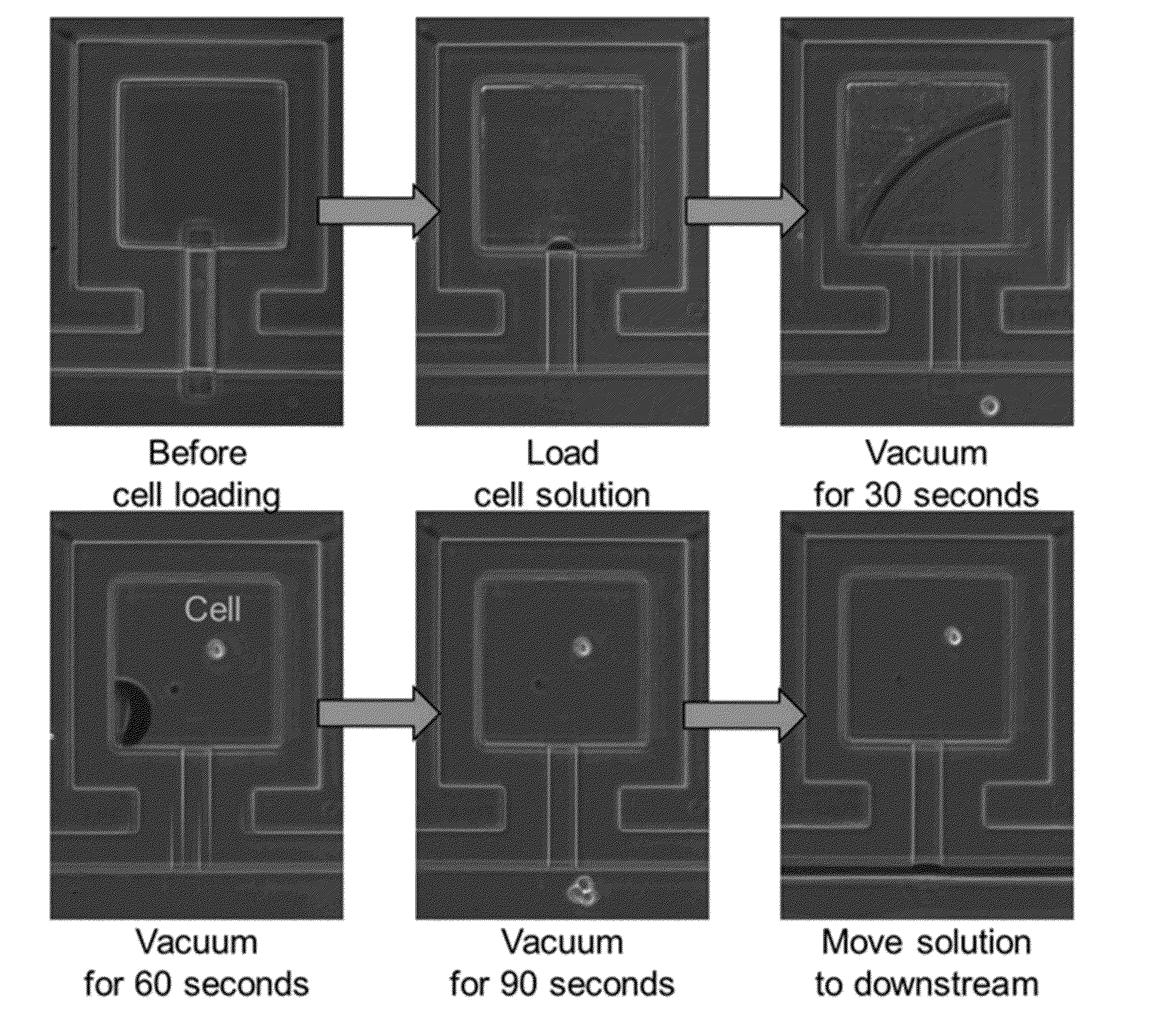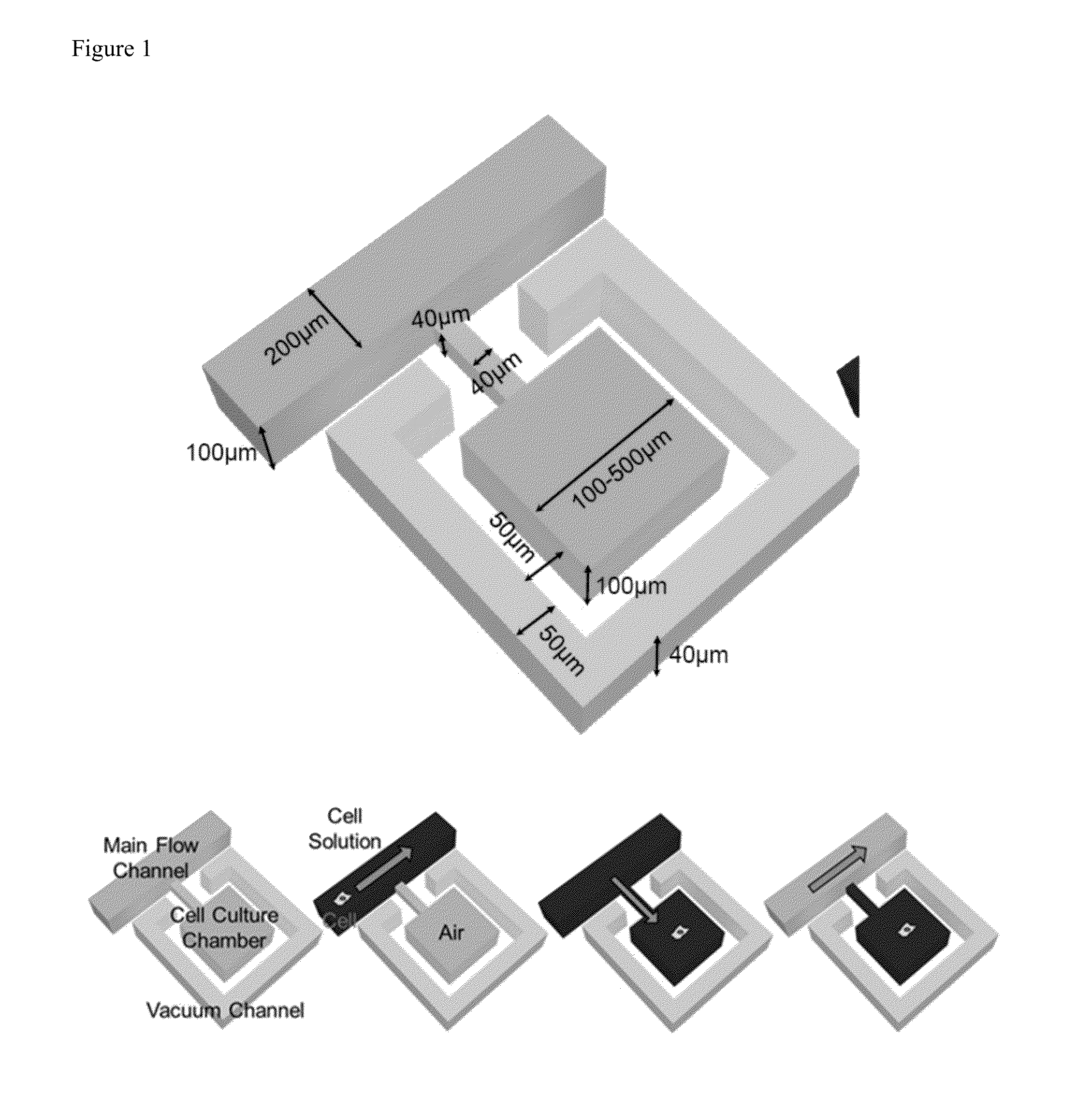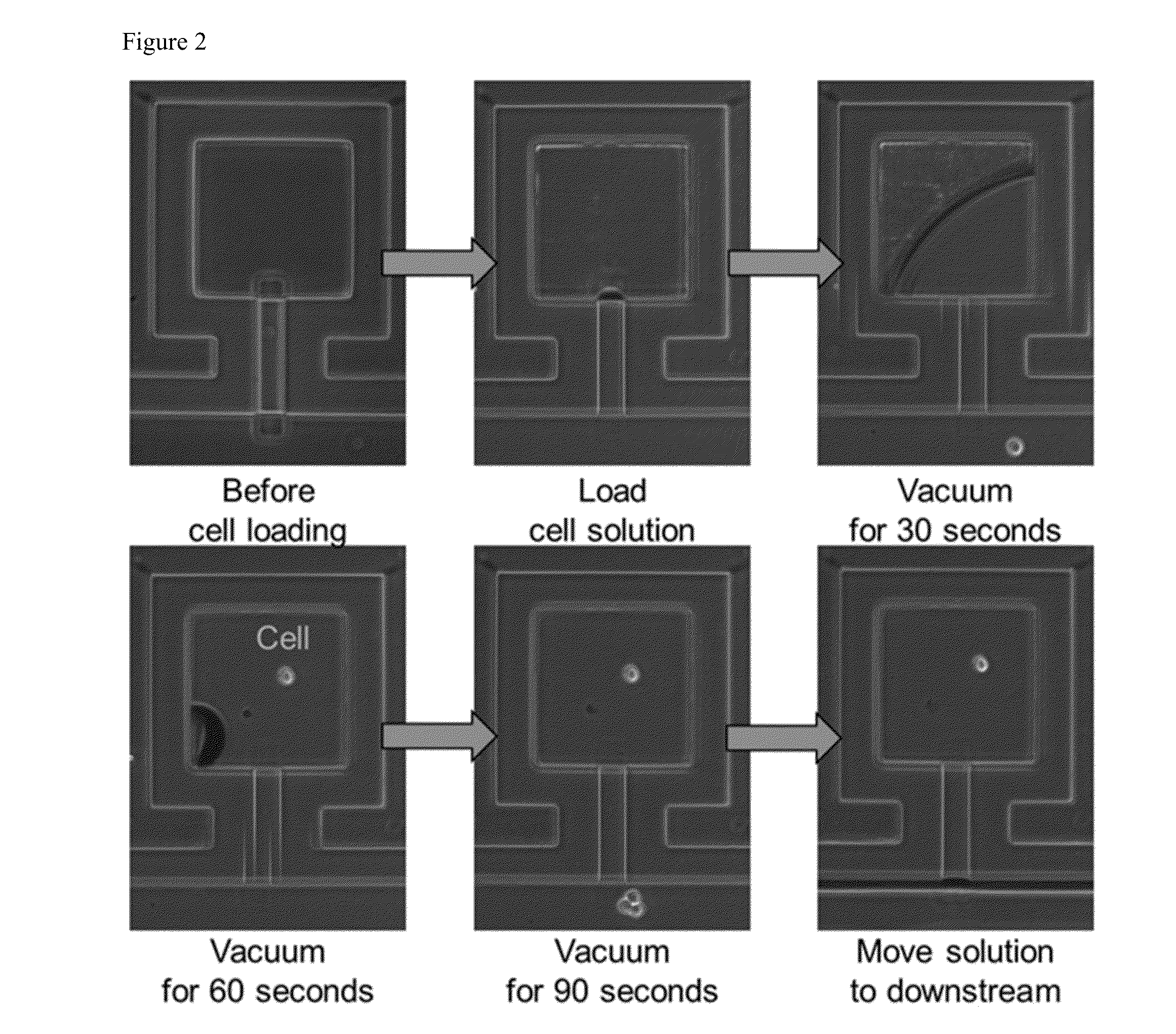Systems and methods for single cell isolation and analysis
- Summary
- Abstract
- Description
- Claims
- Application Information
AI Technical Summary
Benefits of technology
Problems solved by technology
Method used
Image
Examples
example 1
[0092]Operation of the Small Sample Capture Device
[0093]The device eliminates dead volume by driving all of the cell solution into the microfluidics. FIG. 1 shows the operation of a single capture well. The design composes of a main-channel, which transports the cell solution, a cell culture chamber and vacuum channel, which drives the solution into the chamber. One useful characteristic of PDMS is its gas permeability, so the air can diffuse through the PDMS sidewall to the vacuum channel. As a result, the cell can be loaded into the chamber with the cell solution. FIG. 2 demonstrates a cell loading process. One cell was loaded into the chamber.
[0094]FIG. 3 illustrates the operation of the device. First, liquids are pulled downstream to drive the cell solution into the main channel. Then, the vacuum channel is sued to drive the solution and cells into the chamber. If there is any residual solution in the main channel as shown in FIG. 3(C), it is driven downstream and the process is...
example 2
[0101]Design and Fabrication
[0102]The co-culture platform is composed of an inner suspension culture chamber, an outer adherent culture chamber, and narrow interaction channels connecting them (FIG. 7(a)). The whole device comprises or consists of 120 co-culture units (15 by 8) (FIG. 7(b)), and each unit is composed of the two culture chambers connected by 7 narrow (cross-section 3 μm by 20 μm and 100 μm long) channels. To facilitate suspension and adherent culture on the same device, two layers of PDMS are used in fabrication. The bottom layer was patterned with indented microwells that were selectively coated with Poly-hydroxyethylmethacrylate (polyHEMA, Sigma-Aldrich), which has been extensively used as an adhesion blocking coating material [34]. The top channel layer is patterned with microfluidic channels for flow control and chambers for co-culture.
[0103]These two PDMS layers (channel layer and substrate layer) were separately fabricated using a soft lithography processes, and...
PUM
| Property | Measurement | Unit |
|---|---|---|
| Temperature | aaaaa | aaaaa |
| Temperature | aaaaa | aaaaa |
| Length | aaaaa | aaaaa |
Abstract
Description
Claims
Application Information
 Login to View More
Login to View More - R&D
- Intellectual Property
- Life Sciences
- Materials
- Tech Scout
- Unparalleled Data Quality
- Higher Quality Content
- 60% Fewer Hallucinations
Browse by: Latest US Patents, China's latest patents, Technical Efficacy Thesaurus, Application Domain, Technology Topic, Popular Technical Reports.
© 2025 PatSnap. All rights reserved.Legal|Privacy policy|Modern Slavery Act Transparency Statement|Sitemap|About US| Contact US: help@patsnap.com



